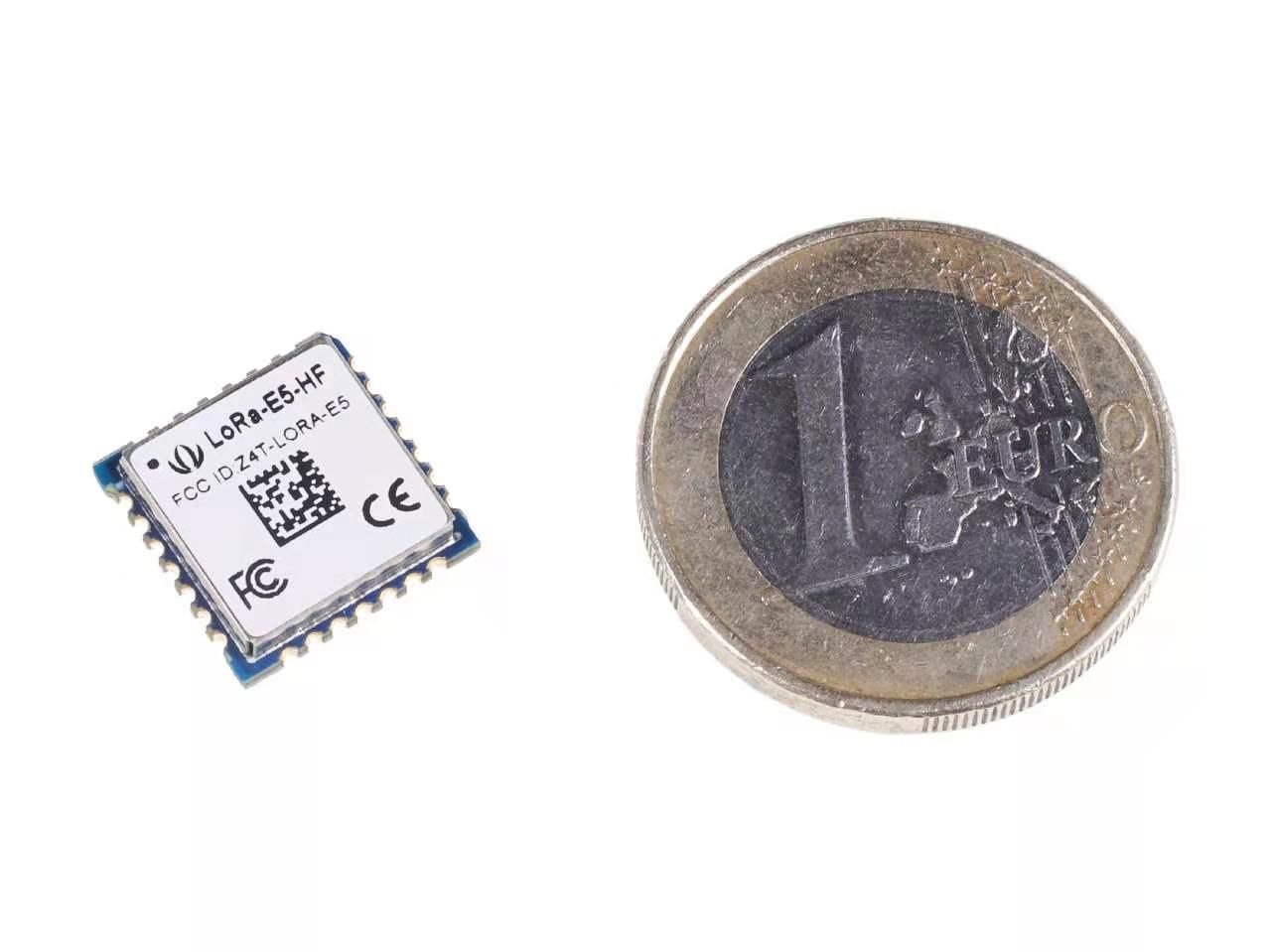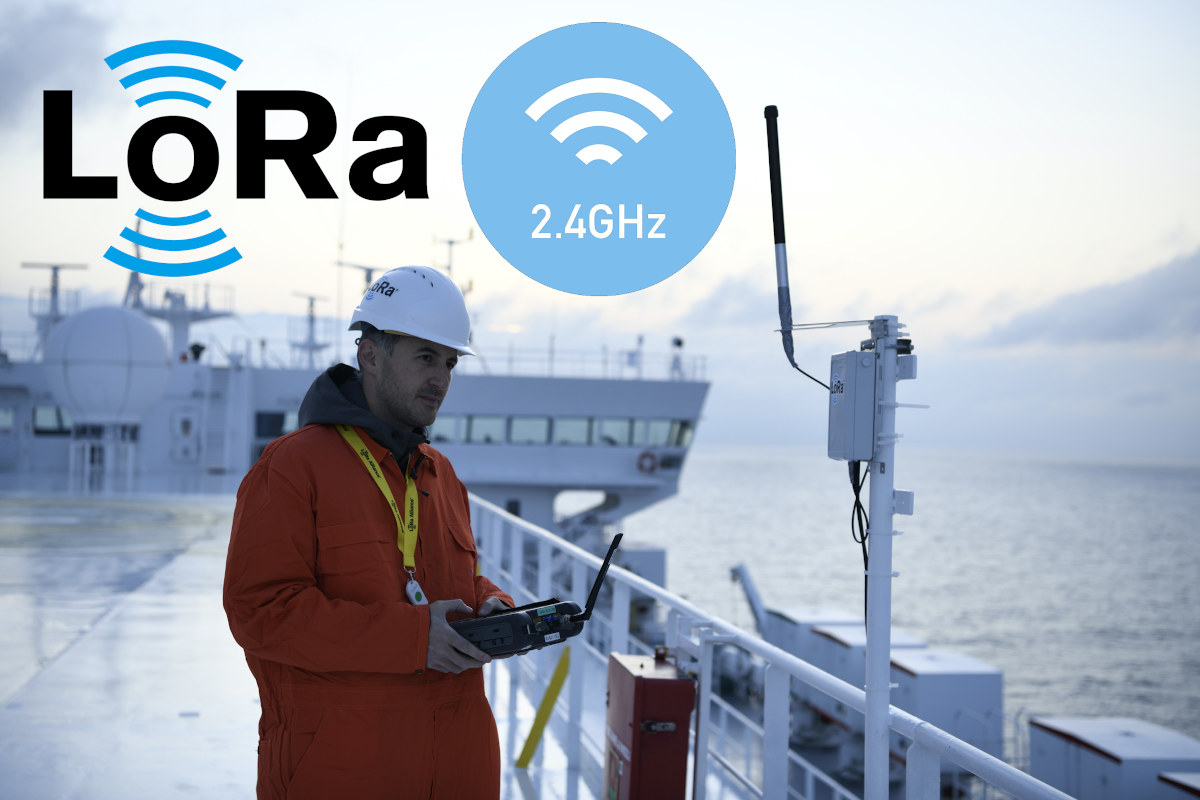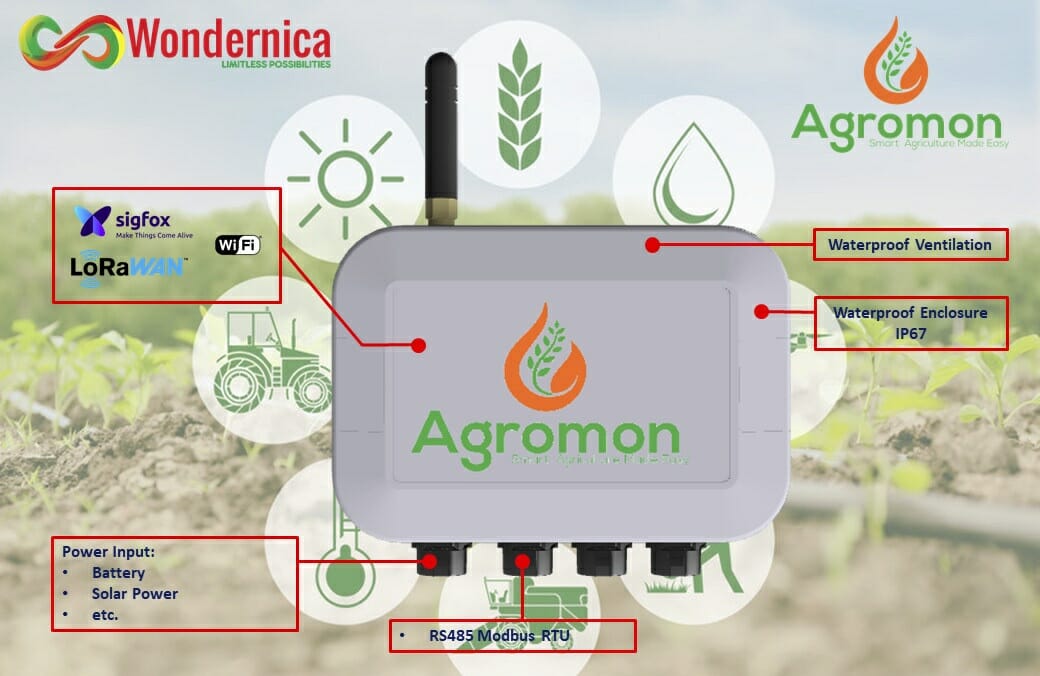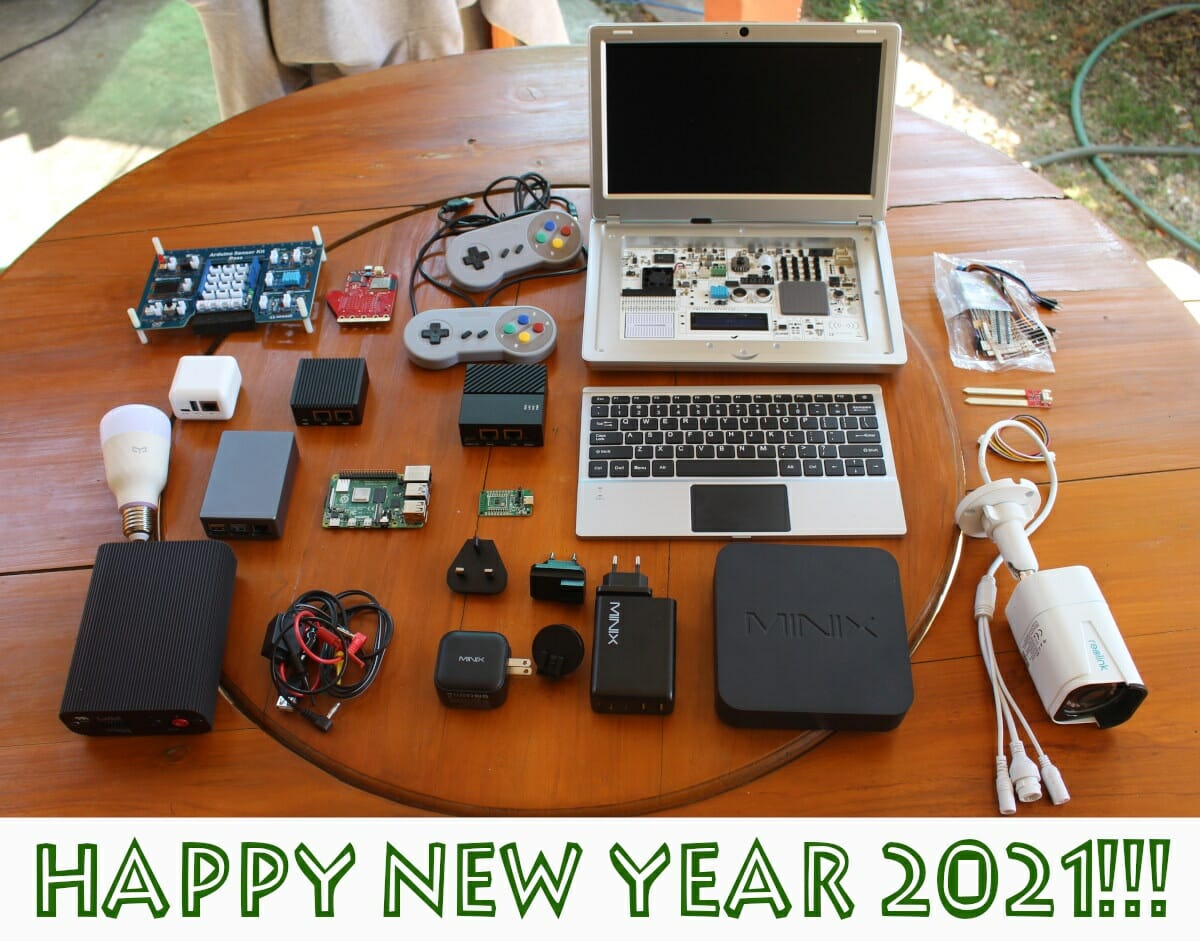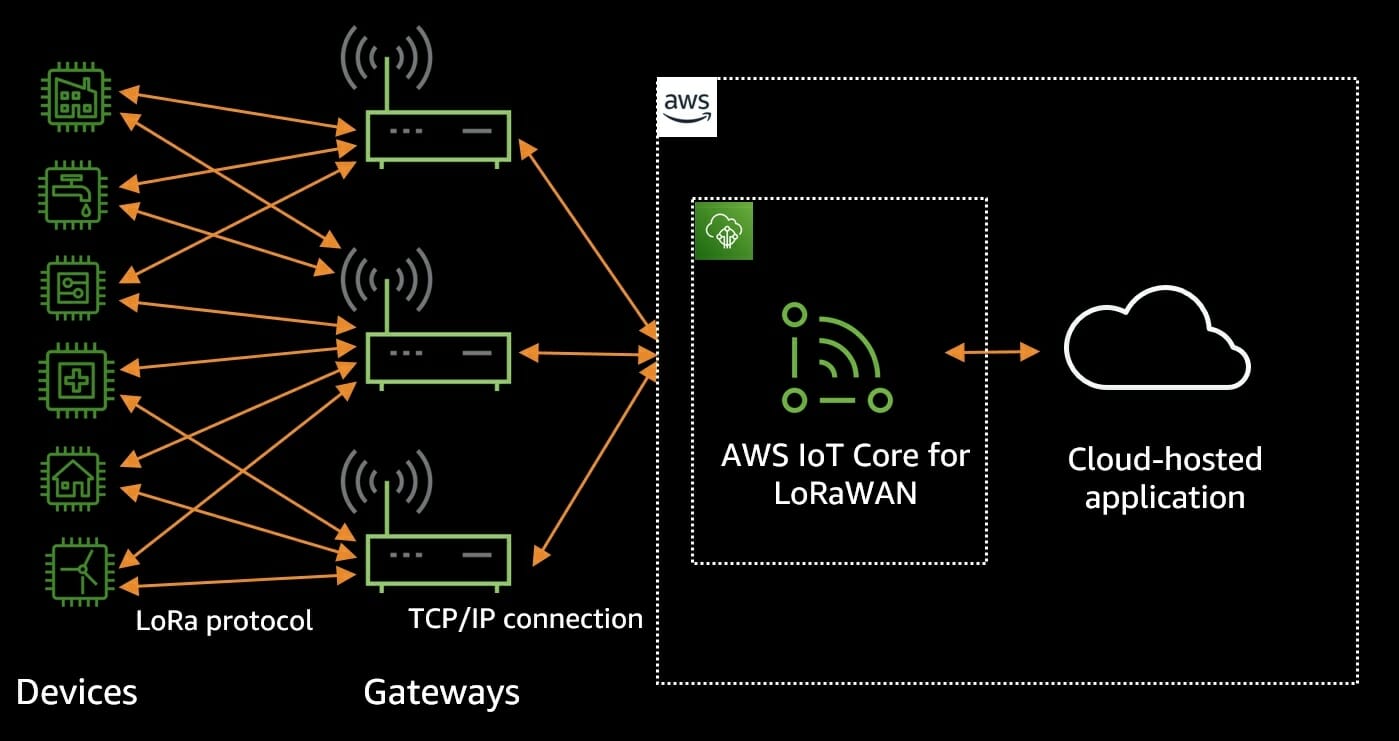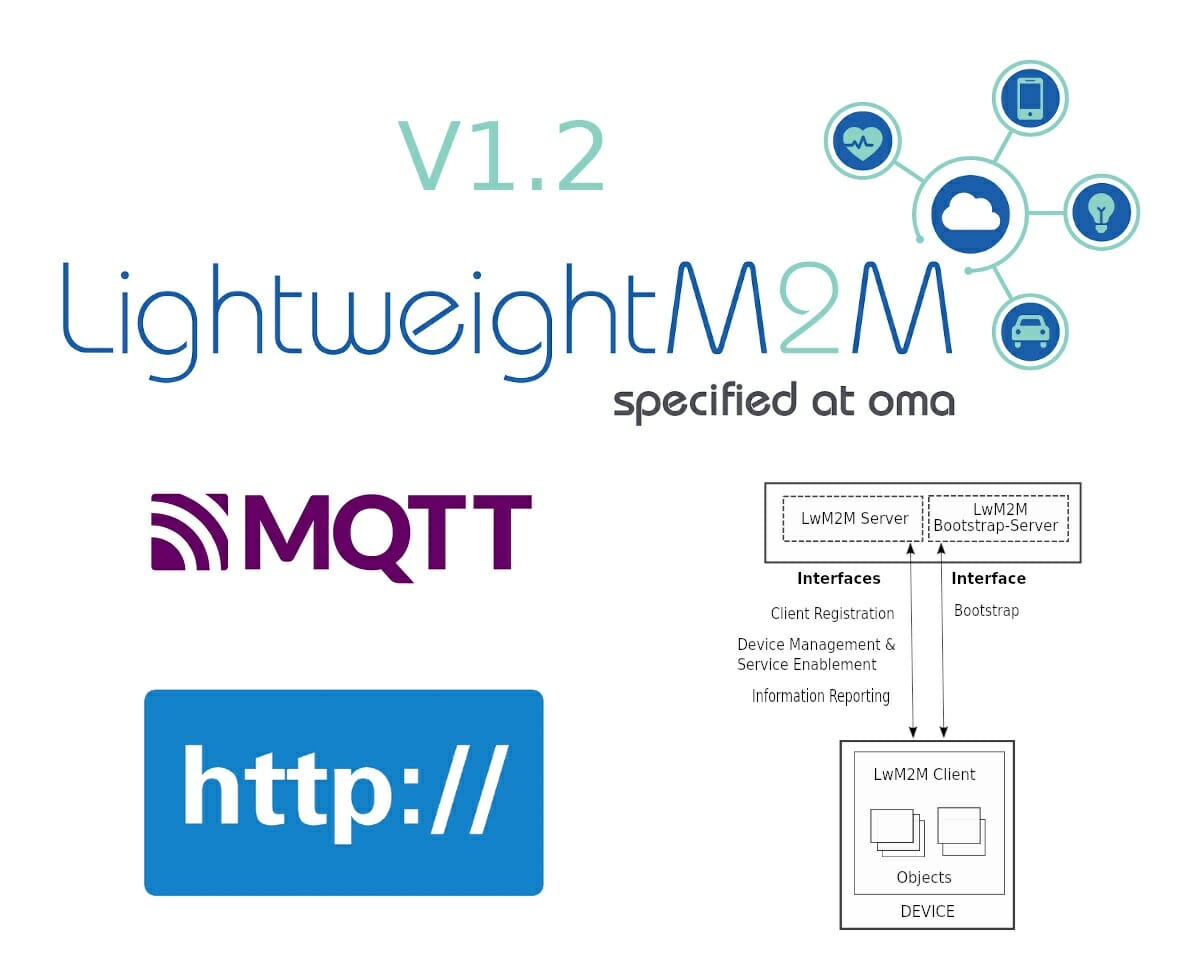Over the years, we’ve seen many LoRa modules combining STM32 microcontroller with Semtech SX12xx wireless transceivers, so that’s probably why STMicro decided to create the first LoRa SoC with STM32WL that was launched last year. I’ve just been informed a tiny (12x12mm) LoRa-E5 module based on STM32WL LoRa SoC working with 868 MHz and 915 MHz bands had recently launched on Seeed Studio for $9.90. LoRa-E5 key features and specifications: SoC – STMicro STM32WLE5JC Arm Cortex-M4 MCU @ 48 MHz with 256 KB flash memory, 64 KB SRAM, SX126x LoRa radio LoRa connectivity Tx power – 22dBm @ 868/915MHz -136.5dBm sensitivity for SF12 with 125KHz BW 158dB link budget Embedded LoRaWAN protocol, AT command Frequency ranges – EU868, US915, AU915, AS923, KR920, IN865 I/Os – 3x UART, 1x I2C, 1x 12-bit ADC, 1x SPIO Supply Voltage – 3.3V Power Consumption As low as 2.1uA sleep current in WOR mode Tx […]
Deutsche Telekom IoT Gateway combines LoRaWAN and LTE-M
I’d normally view LoRaWAN and LTE IoT standards such as NB-IoT or LTE Cat-M (aka LTE-M or eMTC) as competitors, but The Things Industries and Deutsche Telekom partnered to launch an IoT gateway with both LTE-M and LoRaWAN capabilities together with associated services. We do not have much information about the hardware, but it is a LoRaWAN gateway designed by MikroTik that connects to an LTE-M backhaul and to The Things Industries’ device and data platform. If the picture above does indeed represent the actual gateway it should also be equipped with two PoE capable Ethernet ports, and an RS485 terminal block, plus a USB port and a SIM card slot. The solution would mostly be used for smart buildings at first taking advantage of the superior signal penetration of LTE-M. Sensors would send data to the LoRaWAN gateway which then, would forward it to the cloud over LTE-M. This […]
LoRa 2.4GHz is now supported by The Things Network
Semtech brought LoRa to 2.4 GHz through their SX1280 & SX1281 transceivers to enable hardware manufacturers to design region-independent products, rather than region-specific products in the 433, 868, and 915 MHz bands a few years back. Things Industries announced support for LoRa 2.4GHz in The Things Network community network and its open-source stack at The Things Conference 2021 last week. However, switching to 2.4 GHz has a cost since range, one of the key selling points of LoRa, will be reduced compared to sub-GHz frequency, and that makes it most suitable for applications that work in different regions such as maritime and intercontinental logistics applications. Wilhelmsen has partnered with The Things Industries (TTI) and selected Semtech’s LoRa devices as the foundation for its new global 2.4GHz maritime IoT of the Seas platform to deliver an ecosystem of cost-effective, robust and proven IoT solutions and make them available to its diverse […]
Agromon smart agriculture wireless transmitter connects ModBus RS485 sensors to WiFi, LoRaWAN, Sigfox, or NB-IoT
The Internet of Things has many applications including smart agriculture . A few months ago, I talked to a local shrimp farm owner who used Arduino and ESP8266 boards to monitor water and activate pumps only when needed to get shrimps healthy and save on his electricity bill. He built his own solutions, but there are also companies offering easy-to-use smart farming solutions such as Malaysia-based Wondernica’s Agromon “interface wireless transmitter” designed specifically for smart agriculture applications. Agromon has two variants with support for 2 sensors (WR-AGRO-2S) or 3 sensors (WR-AGRO-3S) that share the following specifications: Connectivity – WiFi, Sigfox (RCZ 2/4), LoRaWAN, NB-IoT Sensor Interface – Modbus RS485 (analog input / 4-20mA / 12V-14V output) Power Supply – 12V DC (tolerance up to 14V); supports batteries, solar power, or power adapter Power Consumption – Sleep Mode: 3 mW Dimensions – 130 x 90 x 40mm Ingress Protection – IP67 […]
Arduino MKR inspired MKR Windy board is equipped with STM32WL LoRa SoC
We recently wrote about MKR SharkyPro BLE, Zigbee, OpenThread development board based on STM32WB55 MCU and following Arduino MKR form factor, but it turns out Midatronics has also launched a similar-looking board with LoRa connectivity. MKR Windy board features the company’s Windy STM32WL module with an uFL connector and following the same Arduino MKR layout. MKR Windy specifications: Wireless Module – Windy module (MDX-STWLU-R01) Wireless MCU – STMicro STM32WLE5JX/STM32WL55JX Arm Cortex-M4 MCU @ 48 MHz with up to 256KB flash, 64KB SRAM Connectivity Semtech SX126x sub-GHz radio with LoRa, (G)FSK, (G)MSK, and BPSK modulation, 150 MHz to 960 MHz frequency range RX Sensitivity: –123 dBm for 2-FSK, -148 dBm for LoRa Antenna – uFL connector for external antenna Supply Voltage – 1.8 V to 3.6 V Dimensions : 16 x 26 mm Temperature Range – 40°C to + 85 °C USB – 1x Micro USB port for power and programming […]
Year 2020 in review – Top ten posts and stats
It’s this time of the year when we look back at what happened, and what may be next. 2020 did not pan out as planned in more ways than one, but there were still some interesting developments. Based on 2019 announcements, 2020 was promising to be an exciting year for Amlogic and Rockchip with the expected launch of RK3588 and S908X high-end processors for 8K capable devices, but we’ll have to wait for 2021 for this to happen. Instead, the most interesting processor of the year from the Allwinner, Amlogic, and Rockchip offerings was probably Amlogic S905X4 processing adding AV1 hardware decoding. As pointed out in our “RISC-V 2020 highlights” post, it was a fairly eventful year for RISC-V architecture, although there’s still a long road ahead, especially for application processors. We had seen some general-purpose and Bluetooth RISC-V MCUs in 2019, but 2020 saw the launch of the first […]
AWS IoT Core for LoRaWAN launched with asset tracking and smart building kits
With increasing connectivity issues on low-power devices, which transmit data over long-range, work on batteries that can last several years without replacement, LoRaWAN is one of the major solutions to address these issues as it has support in Zephyr OS as well. A couple of days back, Amazon Web Services announced AWS IoT support for LoRaWAN, which means that it will enable you to connect and manage low-power wireless devices that use LoRaWAN connectivity with the AWS Cloud. Now the enterprises can set-up a private LoRaWAN network by connecting the devices to the AWS Cloud. AWS Cloud basically accelerates IoT application development by acting on the data generated by connecting LoRaWAN devices using AWS services. “The rapid acceleration of growth in both private and public LoRaWAN networks has been key in the expansion of LoRaWAN deployments worldwide. AWS’ launch of AWS IoT Core for LoRaWAN offers an innovative solution to […]
LwM2M v1.2 M2M & IoT device management protocol adds support for HTTP and MQTT, LwM2M gateways
Lightweight M2M (LwM2M) is a REST-based protocol from the Open Mobile Alliance (OMA) for M2M & IoT device management that defines the application layer communication protocol between an LwM2M server and an LwM2M client running on an IoT/embedded device. While LwM2M v1.0 was published in early 2017, we first covered the new protocol a year earlier as Imagination Technologies released the source code for the LwM2M stack running on MIPS Creator Ci40 development board. Since then we’ve mostly seen the LwM2M protocol supported in cellular LTE IoT modules including Quectel BC66 and u-Blox Sara-R410M, as well as the now-defunct Samsung Artik WiFi IoT modules. LwM2M v1.0 was followed by v1.0.1 and v1.0.2 for bug fixes, and v1.1, but OMA has now announced LwM2M v1.2 protocol that adds the following new features: New transports for LwM2M: MQTT and HTTP Optimizations for the bootstrapping and registration interfaces to reduce the amount of […]


